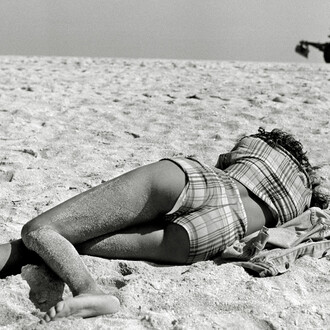North American Aviation’s design of a twin-engine medium bomber was approved by the Army Air Corps in September 1939, and the prototype made its maiden flight less than a year later on 19 August 1940. Christened Mitchell in honor of Billy Mitchell, the American champion of air power theory, the B-25 would become the most widely-produced American twin-engine combat aircraft of World War II.
Early models featured armament of five defensive machine guns and a 2,000 lb. bomb-load. Little was changed in the basic design of the B-25 until the introduction of the G model. First appearing in 1942, the B-25G was built for ground attack, being fitted with a devastating 75mm cannon in an armored nose and carrying a crew of four rather than the original five. The H model, which featured eight additional forward-firing machine guns to complement the cannon, went into service in February 1945 and proved highly effective in destroying Japanese shipping and strafing ground targets. The B-25J, constructed in greatest numbers, carried a crew of six and returned to its original role of bomber. For shorter-range missions, the J could carry up to 6,000 lbs. of bombs, three times the capability of early B-25s. The Navy and Marine Corps procured the Mitchell under the designation PBJ, deploying it in the Pacific as a patrol bomber.
The B-25 earned its place in history as the aircraft selected by Lt Col James H. Doolittle to bomb Tokyo in response to the Pearl Harbor attack. On 18 April 1942, sixteen B-25 Mitchells launched from the American aircraft carrier Hornet on a daring raid against mainland Japan. At the time, the Mitchell was the only American bomber that could take off from an aircraft carrier with the range to reach Japan. Japanese pickett ships spotted the Hornet task force 200 miles from their intended launch point forcing Doolittle and his Raiders to depart early. Knowing they may not have enough fuel to complete the mission, the Doolittle Raiders launched from the pitching deck bound for targets in Japan, then onward to China to refuel. The early departure meant the Raiders would not have enough fuel to make it into interior China as planned, forcing the crews to either bail out or ditch along the coast. Only one aircraft made a safe landing in Russia, but the crew and the airplane were interned by the Russians. Though damage inflicted as a result of the raid was minimal, American morale soared while the Japanese were forced to pull back some of their resources to protect the homeland. The change in Japanese tactics following the Doolittle Raid is believed to have led to the decisive American victory at the Battle of Midway less than two months later.
Nearly 11,000 Mitchells were built and served with many Allied nations in every major theater of operation. After the war, most B-25s were converted into trainers for the USAF or turned over to Air National Guard units. Others were sold as surplus and were converted into luxury executive transports, crop dusters, fire bombers and airborne photography platforms.
The LSFM B-25 remained stateside during World War II and was converted into a trainer after the war for the USAF where it flew until the late 1950s. Acquired by the CIA, it flew covert missions during the Bay of Pigs invasion from Central America. Later, it would pass through several owners and was eventually restored in the late 1970s. LSFM founder Robert L. Waltrip purchased the B-25 in 1984 as the first of his collection that would serve as the basis for the Lone Star Flight Museum. Known as Special Delivery for many years, the LSFM repainted the airplane in 2007 in the colors of the Doolittle Raiders. It is the only flying B-25 painted in the colors of the Raiders and is the only civilian aircraft to feature the Doolittle Raider emblem. It is the official B-25 of the Doolittle Raider Association.
















